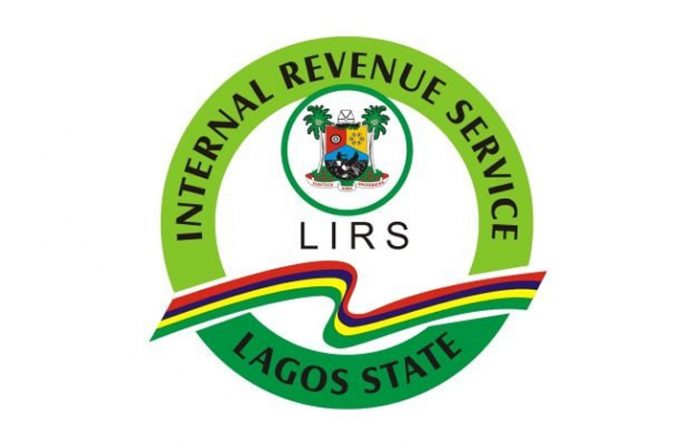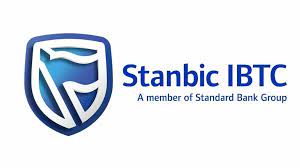October 22, 2018/Moody’s Investors Service
Moody’s Investors Service has today affirmed First Bank of Nigeria Limited’s (FBN) B2/Not Prime long-term and short-term local currency deposit ratings and the bank’s B3/Not Prime long-term and short-term foreign currency deposit ratings. At the same time, the rating agency has affirmed FBN’s B2/Not Prime long-term and short-term, local currency and foreign currency Counterparty Risk Ratings (CRR) and the bank’s baseline credit assessment (BCA) and adjusted BCA at b3. Moody’s changed the outlook on long-term ratings to stable from negative.
The full list of affected ratings can be found at the end of this press release.
The affirmation of FBN’s ratings is driven by the bank’s moderate capital, resilient pre-provision profitability and a stable funding profile. These strengths are counterbalanced by FBN’s still high stock of nonperforming loans (NPLs) compared to other large Nigerian banks, reflecting relatively modest progress in reducing its NPLs.
The decision to change the outlook to stable from negative reflects Moody’s view that, while NPLs remain elevated, downside risks to asset quality have considerably diminished following remedial steps taken by the bank and should slowly decline going forward. In particular, FBN reduced its foreign currency denominated loans and efforts are underway to reduce single-name concentrations.
The improving operating environment, especially in relation to oil prices and the bank’s significant exposure to the upstream oil and gas sector, will also help prevent formation of large stocks of new NPLs. Moody’s expects that the bank’s NPL ratio will reduce further, most plausibly at a slow pace over several quarters, as the bank hopes to resolve its current large problematic loans gradually because of the long time it tends to take to foreclose on collateral in Nigeria.
Ratings Rationale
Rationale for Affirmation of Ratings
— Modest capital and stable funding profile moderated by elevated asset risk
FBN benefits from its modest capital, with a ratio of tangible common equity to risk weighted assets at 12.2% as of December 2017. The bank’s pre-provision profitability remains resilient at 4.2% at year-end 2017. Moody’s expects the bank to maintain its solid pre-provision profitability, supported by its high net interest margins and non-interest income that is benefiting from the bank’s growing alternative channels strategy. In addition, the rating agency assesses the bank’s funding profile as stable, supported by its large stock of liquid assets and moderate reliance on market funding.
However, FBN’s strengths are moderated by its high NPLs compared to its Nigerian peers (Nigerian large banks). Despite improvements in its NPLs, the gap between FBN’s NPLs at 20.5% as of June 2018 and that of its local peers, at an average of 5.6%, remains wide. The high NPLs reflect the bank’s relatively still large sectoral and single-name concentration risks and its legacy exposure to the oil and gas industry which created high NPLs during the oil price downturn in 2016. Also, the bank’s foreign currency loan book remains high at 48% of its total loans as of June 2018.
Rationale For Stable Outlook
— Asset and foreign currency liquidity risks have stabilised
FBN continues to make progress in improving its asset quality as the NPL ratio reduced to 20.5% as of June 2018, from a peak of 24.2% at year-end 2016. Moody’s expects the NPL ratio to gradually fall to 12-15% range within the next 12-18 months, driven largely by the on-going balance sheet de-risking and a more favourable operating environment, which will help prevent the formation of new impaired loans. FBN reduced its foreign currency loan book by 36% between 2015 and 2017, adjusted for naira devaluation. The better operating environment, including the current high oil prices, will support performance of FBN’s large exposure to the upstream oil and gas sector because a majority of these exposures have been restructured on assumption of lower oil price.
The rating agency also expects FBN to benefit from its enhanced risk management governance that resulted in tighter controls and better underwriting standards. Moody’s expects better risk management processes will improve the quality of FBN’s new loans and reduce concentration risks. FBN’s loan book, which contracted 7% between June 2018 and year-end 2017, will also help contain new NPL formation. However, Moody’s expects a moderate recovery in loan growth in the next 12-18 months. The bank increased its ratio of provisions to NPLs to 82%, which is now in line with global peers.
The rating agency noted the bank’s improvements in its foreign currency liquidity. By cutting back foreign-currency lending and paying off some its borrowings, FBN will improve the coverage of its foreign currency borrowings by liquid foreign currency assets (cash and bank balances, loans due from banks and securities for trading) to about 2.5x from 1.9x at year-end 2017. Moody’s expects foreign currency liquidity to continue improving.
What Could Change Ratings – Up/Down
The bank’s ratings could be upgraded if its asset risk metrics continue to improve toward the median of other large Nigerian banks. The ratings could also be upgraded if Nigeria’s sovereign rating is upgraded.
The ratings could be downgraded if there is a deterioration of the bank’s asset quality metrics that would place negative pressure on its earnings and capital buffers. A downgrade of Nigeria’s sovereign rating would also exert pressure on the bank’s ratings.
The principal methodology used in these ratings was Banks published in August 2018. Please see the Rating Methodologies page on www.moodys.com for a copy of this methodology.
List Of Ratings Affected
..Issuer: First Bank of Nigeria Limited
..Affirmations:
….Adjusted Baseline Credit Assessment, affirmed b3
….Baseline Credit Assessment, affirmed b3
…Long-term Counterparty Risk Rating (Local Currency and Foreign Currency), affirmed B2
NSR Long-term Counterparty Risk Rating (Local Currency and Foreign Currency), affirmed A2.ng
Short-term Counterparty Risk Rating (Local Currency and Foreign Currency), affirmed NP
NSR Short-term Counterparty Risk Rating (Local Currency and Foreign Currency), affirmed NG-1
Long-term Bank Deposits (Foreign Currency), affirmed B3, outlook changed to Stable from Negative
Long-term Bank Deposits (Local Currency), affirmed B2, outlook changed to Stable from Negative
NSR Long-term Bank Deposits (Foreign Currency), affirmed A3.ng
NSR Long-term Bank Deposits (Local Currency), affirmed A2.ng
Short-term Bank Deposits (Foreign Currency and Local Currency), affirmed NP
NSR Short-term Bank Deposits (Foreign Currency), affirmed NG-2
NSR Short-term Bank Deposits (Local Currency), affirmed NG-1
Long-term Counterparty Risk Assessment, affirmed B2(cr)
Short-term Counterparty Risk Assessment, affirmed NP(cr)
Long-term Issuer Rating (Local Currency and Foreign Currency), affirmed B2, outlook changed to Stable from Negative
Short-term Issuer rating (Local Currency and Foreign Currency), affirmed NP
Outlook Actions:
Outlook changed to Stable from Negative
Moody’s National Scale Credit Ratings (NSRs) are intended as relative measures of creditworthiness among debt issues and issuers within a country, enabling market participants to better differentiate relative risks. NSRs differ from Moody’s global scale credit ratings in that they are not globally comparable with the full universe of Moody’s rated entities, but only with NSRs for other rated debt issues and issuers within the same country. NSRs are designated by a “.nn” country modifier signifying the relevant country, as in “.za” for South Africa.
For further information on Moody’s approach to national scale credit ratings, please refer to Moody’s Credit rating Methodology published in May 2016 entitled “Mapping National Scale Ratings from Global Scale Ratings”. While NSRs have no inherent absolute meaning in terms of default risk or expected loss, a historical probability of default consistent with a given NSR can be inferred from the GSR to which it maps back at that particular point in time.













